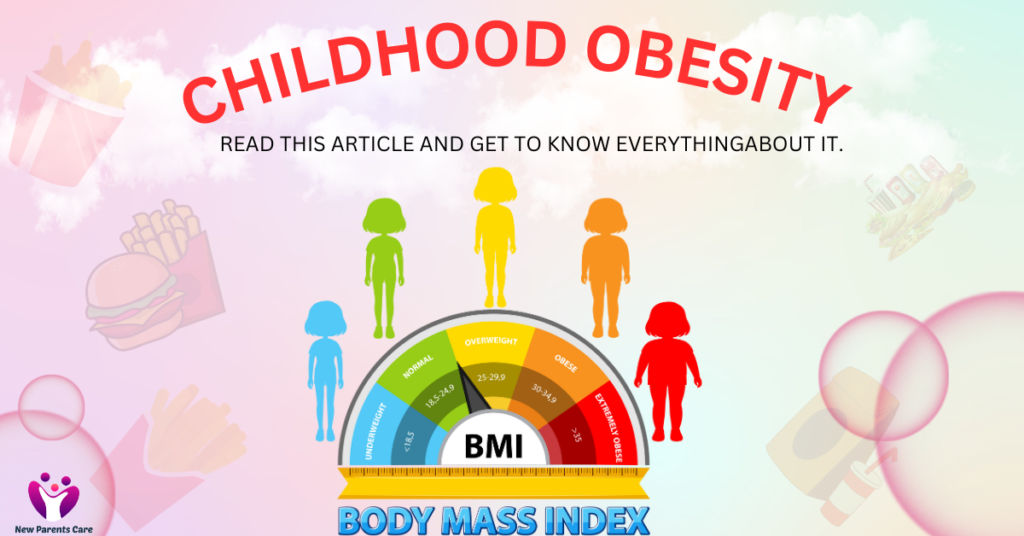Introduction
Childhood obesity is one of the major diseases prevailing in India. It affects all age groups including the children. It affects child overall growth and development including physical, emotional and social well being. So this blog aims to guide the parents about the causes, symptoms, care and prevention strategies of childhood obesity.
What is childhood obesity?
Childhood obesity can be defined as the condition where your child beyond the healthy weight suitable for their age, height and sex.
Children BMI is different from that of adults. For adults BMI is height for weight but for children is age and sex specific because their body undergoes various changes as they grow in age.
According to studies conducted by the U.S. Centers for Disease Control and Prevention (CDC) between 2017 and 2020, approximately 19.7% of children and adolescents aged 2 to 19 in the U.S. were affected by obesity, which equates to around 14.7 million individuals in this age group.
CAUSES AND EFFECTS OF CHILDHOOD OBESITY 
Many factors contribute for the cause of child weight gain. For growing needs children needs certain amount of calories. But when the amount of calories exceeds beyond the required amount, the excess calories will be stored as fat under adipose tissue. Other factors such as the type of food, quantity of food and the physical exercise also affects the obesity in kids.
Genetics
Genetic factors are also one of the crucial factors which affect the occurrence of obesity in children. Children whose parents or siblings are obese have the chances of affecting from obesity. Studies have shown that some of the genes may contribute to weight gain. But not all children with family obese history will develop it.
Family and home environment factors
Family behaviors and home environment factors may also contribute to obesity in children, which includes
- Type and frequency of food parents and caregivers offer their children
- High consumption of sugar-sweetened beverages.
- Eating larger portion sizes.
- Increased consumption of highly processed foods.
- Frequent outside meals instead of home meals
- Increased exposure to screen time.
- Lack of physical activity
- Lack of quality sleep.
Social determinants of health
Social determinants of health (SDoHs) are the conditions in the environments where you are born, live, learn, work and play that can affect your health.
The location and surroundings of the family may also have an effect on developing the obesity in children. The type of food and beverages that schools and day care center provide to your child also affect their eating habits. The amount of physical activity your child receives also affects the obese conditions. Socioeconomic factors which contribute to childhood obesity are:
- Proximity to fast food.
- Access to transportation.
- Limited access to recreational facilities or parks in your community to be physically active.
Cultural factors
Advertisements on different media regarding fast foods and unhealthy foods are affecting children health as they see and attract for them, they immediately having the desire to consume them.
as they see and attract for them, they immediately having the desire to consume them.
Childhood obesity and its impact on health 
Children who suffer from obesity are at a higher risk of developing many other disease conditions. The most common complications include:
- High blood pressure
- High cholesterol
- Type 1 and type 2 diabetes
- Non-alcohol related fatty liver disease
Other complications include:
- Asthma
- Obstructive sleep apnea
- Polycystic ovarian syndrome (PCOS)
- Depression
- Joint pain
- Heart disease
Furthermore, children with obesity face an increased risk of developing
- Social isolation.
- Low self-esteem.
- Bullying
How to prevent childhood obesity naturally?
Comprehensive obesity treatment typically includes:
- Providing intensive, long-term treatment.
- Addressing social determinants of health, such as ensuring access to affordable, nutritious food, plays a key role in promoting overall well-being.
- Using non-stigmatizing approaches to treatment that considers your child and family’s unique qualities and situation.
- Motivate your children regarding the importance of nutrition and physical activity for prevention.
- Combining intensive health behavior and lifestyle treatments (IHBLT) with weight loss medications and/or bariatric or metabolic surgery, when needed, can offer a comprehensive approach to managing weight.
- Make adjustable treatments for the changing needs of your family.
Specialists strongly advocate for the use of intensive health behavior and lifestyle treatment (IHBLT).
IHBLT is most often effective when it:
- Happens face-to-face.
- Engages the whole family.
- Includes a minimum of 26 hours of instruction on nutrition, physical activity, and behavior modification over a period of three to twelve months.
Conclusion

Preventing childhood obesity is a team effort that requires commitment to healthy eating, regular physical activity, and emotional well-being. By making small, consistent changes, parents can guide their children toward a healthier future.
Become Part of Our WhatsApp Community
Connect with other parents, share your journey, and get expert insights.
Join Our WhatsApp Community Now!
